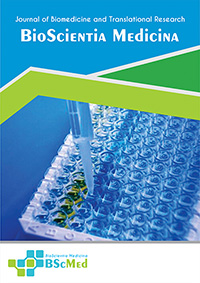Main Article Content
Abstract
Background: Vanishing lung syndrome (VLS), a severe form of giant bullous emphysema, causes debilitating dyspnea by compressing functional lung. A critical evidence gap exists regarding the optimal management strategy, forcing a contentious choice between surgical bullectomy and conservative care. This study provides the first meta-analytic synthesis comparing these two approaches.
Methods: Following PRISMA guidelines, we systematically searched PubMed, Embase, Scopus, and Web of Science for comparative studies (2015-2024) evaluating bullectomy versus conservative management in symptomatic VLS. Primary outcomes were changes in Forced Expiratory Volume in one second (FEV1), St. George's Respiratory Questionnaire (SGRQ) scores, and major complications. Data were pooled using a random-effects model, and bias was assessed with the ROBINS-I tool.
Results: Six non-randomized studies involving 488 patients were included. The overall risk of bias was moderate to serious. Compared to conservative care, bullectomy was associated with a substantial improvement in FEV1 (Mean Difference: 0.48 L; 95% CI: 0.35 to 0.61) and a profound improvement in quality of life (SGRQ MD: -15.55; 95% CI: -20.21 to -10.89). However, this efficacy was counterbalanced by a nearly six-fold increase in the risk of major complications (Risk Ratio: 5.82; 95% CI: 2.98 to 11.37).
Conclusion: Our synthesis suggests that for carefully selected patients, bullectomy offers superior physiological and quality-of-life outcomes over conservative management, but at the cost of significantly higher perioperative risk. These findings, derived from low-quality evidence, underscore the critical need for a highly individualized, multidisciplinary approach to patient selection and a thorough shared decision-making process.
Keywords
Article Details
As our aim is to disseminate original research article, hence the publishing right is a necessary one. The publishing right is needed in order to reach the agreement between the author and publisher. As the journal is fully open access, the authors will sign an exclusive license agreement.
The authors have the right to:
- Share their article in the same ways permitted to third parties under the relevant user license.
- Retain copyright, patent, trademark and other intellectual property rights including research data.
- Proper attribution and credit for the published work.
For the open access article, the publisher is granted to the following right.
- The non-exclusive right to publish the article and grant right to others.
- For the published article, the publisher applied for the Creative Commons Attribution-NonCommercial-ShareAlike 4.0 International License.





